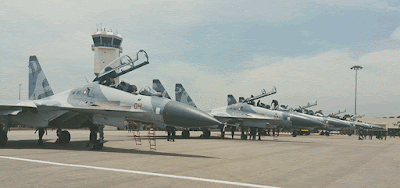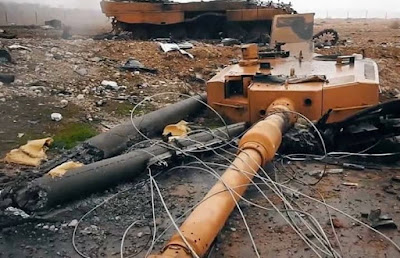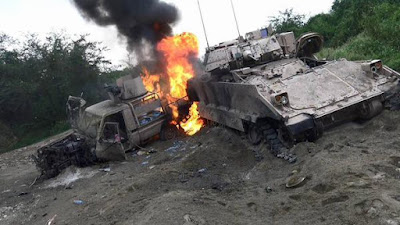There are many Singaporeans who are so familiar with Peninsular Malaysia that they can find their way around the country without a map. Perhaps you are one of them.
But ask them to look south, towards Indonesia's Riau archipelago, and that's where most Singaporeans will be flummoxed.
Many will be hard-pressed to name any island beyond Batam and Bintan. This is
terra incognita for the average Singaporean.
In time to come, it may be worth paying closer attention to the geography south of Singapore because the Indonesian armed forces (TNI) is expected to scale up its presence in the Riau islands.
It is already happening, albeit at a slow pace that has nonetheless seen the number of TNI defence assets and tempo of their activity creep up over the years.
For example, the
Tutuka air defence exercise has seen TNI warplanes make their presence felt whenever they operate from Batam's Hang Nadim airport.
In October 2014, the TNI warplanes that intercepted a Singapore-registered propellor-plane on a training flight off Borneo were scrambled from Batam.
During the
Tutuka exercise in 2015, military flights originating from Hang Nadim once again caught Singapore's interest.
Last October, the TNI's war games in the Natunas, codenamed
Angkasa Yudha, were supported by Indonesia Sukhoi Su-27/30 and Lockheed-Martin F-16 warplanes - its most advanced fighter aircraft - operating from Batam. The war games were widely publicised in the Indonesian media.
Alas, with Singaporeans generally ignorant of the Riau neighbourhood, firepower demonstrations like these tend to go unnoticed by an apathetic Singaporean public.
Mind you, this includes a vast number of citizen soldiers.
We ought to take note because ties between the TNI and Singapore Armed Forces (SAF) are longstanding, multifaceted and mutually beneficial for military personnel from both countries.
Among the many war games that the SAF conducts with foreign armed forces, it is the bilateral naval exercise,
Eagle Indopura, that holds the record as the long-running bilateral military exercise (it started in 1974).
Both armed forces have also established a practice of sending their more promising officers for each other's courses. Apart from the professional knowhow gained, scores of TNI and SAF officers have also deepened their understanding of their neighbour. Such personal experience contributes immeasurably to fostering better bilateral ties between ASEAN's largest and smallest members - and not just in the defence arena.
When Indonesia raises its defence posture in the Riau chain, the strategic narrative for doing so could point out the strategic location of these islands. These sit astride some of the busiest sea lanes in the world, which are used by about 1,000 ships daily (Malacca Strait and Singapore Strait) and through which about a third of the world's trade and about half its oil passes.
Basing fighter jets in Batam will also enable the TNI to respond more quickly and effectively to situations in the South China Sea.
Indonesia need not justify to anyone where and when it will deploy the TNI. For a archipelagic nation whose length is as is vast as the continental United States, and where the uptick in economic activity will eventually see the TNI better funded than the SAF, we should expect the TNI to take on a higher profile as its arsenal expands.
Any move by Indonesia to upsize its military presence south of the border will present the SAF with yet more opportunities to interact with the TNI.
However, a permanent presence of TNI war machines will also pose a different dynamic to Singapore's deterrence posture, force readiness and response plans.
As the so-called Growth Triangle has fallen off the radar of investors in Indonesia, Malaysia and Singapore, the economic wherewithal of the Riau islands has likewise not featured prominently (if at all) in recent investment efforts staged by the Lion City to court foreign investors. The fading of the Growth Triangle idea should not mean that the Riau islands should similarly fall of the radar for defence planners.
And if Singapore falls within range of land-based war machines on Batam, say for example, rocket artillery, we ought to leverage on ties with the TNI to better understand the rationale for moving such firepower to the island.
We need to keep a close eye on the winds of change that may herald a cooling of Indon-Singapore relations. The 2014 spate that arose after Indonesia announced that one of its warships would be named after two TNI Marines, who were convicted of bombing MacDonald House in Singapore during the Confrontation, prompted both countries to reassess the tenor of their friendship.
From time to time, factors outside the defence orbit have unsettled even the best intentions from the TNI and SAF to bring bilateral exchanges to a new level.
The stalled Defence Cooperation Agreement is one example. Signed by defence ministers from both countries in 2007, it awaits ratification by the Indonesian parliament. As a result, training facilities such as the Siabu Air Weapons Range - once the most advanced instrumented area in Southeast Asia for war games involving war planes and helicopters - has been kept in suspended animation after a promising start in the 1990s.
We have to be cognizant of future unknown-unknowns - to borrow terminology famously used by former United States Defense Secretary Donald Rumsfeld - that could strain TNI-SAF ties.
Forward-looking policy makers should recognise and think through scenarios involving this patch of Indonesian territory, if TNI assets in the Riau chain are someday enlisted for political shadow boxing.
Look south; know thy neighbour.
You may also like:
TNI may up the ante in Batam. Click
here
Two sides of the same
strait street. Click
here
KRI Usman Harun episode sets interesting poser for TNI-SAF ties. Click
here
Indonesia's defence build up must be viewed in the right light. Click
here











































